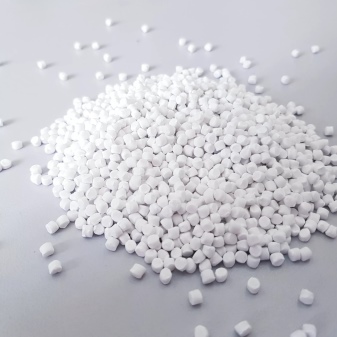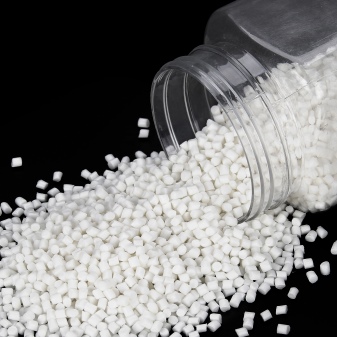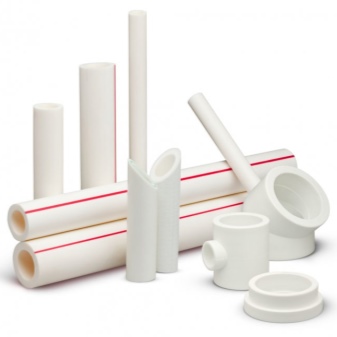Polyethylene and polypropylene: similarities and differences

Polypropylene and polyethylene are some of the most common types of polymeric materials. They are successfully used in industry, everyday life, and agriculture. Due to their unique composition, they practically have no analogues. Let's take a closer look at the main similarities and differences between polypropylene and polyethylene, as well as the scope of the materials.
Composition
Like most such scientific terms, the names of the materials were borrowed from the Greek language. The prefix poly, present in both words, is translated from Greek as “many”. Polyethylene is a lot of ethylene and polypropylene is a lot of propylene. That is, in the initial state, materials are ordinary combustible gases with the formulas:
- C2H4 - polyethylene;


- C3H6 - polypropylene.


Both of these gaseous substances belong to special compounds, the so-called alkenes, or acyclic unsaturated hydrocarbons. To give them a solid structure, polymerization is carried out - the creation of high-molecular-weight matter, which is formed by combining individual molecules of low-molecular substances with active centers of growing polymer molecules.


As a result, a solid polymer is formed, the chemical basis of which is only carbon and hydrogen. Certain characteristics of materials are formed and enhanced by adding special additives and stabilizers to their composition.
In terms of the form of primary raw materials, polypropylene and polyethylene practically do not differ - they are mainly produced in the form of small balls or plates, which, in addition to their composition, can only differ in size. Only then, by melting or pressing, various products are produced from them: water pipes, containers and packaging, hulls for boats and much more.

Properties
According to the internationally accepted German standard DIN4102, both materials belong to class B: hardly flammable (B1) and normally flammable (B2). But, despite the interchangeability in some areas of activity, polymers have a number of differences in their properties.
Polyethylene
After the polymerization process, polyethylene is a hard material with an unusual tactile surface, as if covered with a small layer of wax. Due to its low density indicators, it is lighter than water and has high characteristics:
- viscosity;
- flexibility;
- elasticity.
Polyethylene is an excellent dielectric, resistant to radioactive radiation. This indicator is the highest among all similar polymers. Physiologically, the material is absolutely harmless, therefore it is widely used in the manufacture of various products for storing or packaging food products. Without loss of quality, it can withstand a fairly wide range of temperatures: from -250 to + 90 °, depending on its brand and manufacturer. Autoignition temperature is + 350 °.


Polyethylene is highly resistant to a number of organic and inorganic acids, alkalis, saline solutions, mineral oils, as well as to various substances with an alcohol content. But at the same time, like polypropylene, it is afraid of contact with powerful inorganic oxidants such as HNO3 and H2SO4, as well as with some halogens. Even a slight effect of these substances leads to cracking.
Polypropylene
Polypropylene has high indicators of impact strength and wear resistance, is waterproof, and withstands multiple bends and breaks without loss of quality. The material is physiologically harmless, therefore products made from it are suitable for storing food and drinking water. It is odorless, does not sink in water, does not emit smoke when ignited, but melts in droplets.
Due to its non-polar structure, it tolerates contact with many organic and inorganic acids, alkalis, salts, oils and alcohol-containing components well. It does not react to the influence of hydrocarbons, but with prolonged exposure to their vapors, especially at temperatures above 30 °, deformation of the material occurs: swelling and swelling.


Halogens, various oxidizing gases and oxidizing agents of high concentration, such as HNO3 and H2SO4, adversely affect the integrity of polypropylene products. Self-igniting at + 350 °. In general, the chemical resistance of polypropylene at the same temperature regime is almost the same as that of polyethylene.
Features of production
Polyethylene is made by polymerizing ethylene gas at high or low pressure. The material produced under high pressure is called low density polyethylene (LDPE) and is polymerized in a tubular reactor or a special autoclave. Low pressure high density polyethylene (HDPE) is produced using gas phase or complex organometallic catalysts.
The feedstock for the production of polypropylene (propylene gas) is extracted by refining petroleum products. The fraction isolated by this method, containing approximately 80% of the required gas, undergoes additional purification from excess moisture, oxygen, carbon and other impurities. The result is propylene gas of high concentration: 99-100%. Then, using special catalysts, the gaseous substance is polymerized at medium pressure in a special liquid monomer medium. Ethylene gas is often used as a copolymer.


Applications
Polypropylene, like chlorinated PVC (polyvinyl chloride), is actively used in the production of water pipes, as well as as insulation for electrical cables and wires. Due to their resistance to ionizing radiation, polypropylene products are widely used in medicine and the nuclear industry. Polyethylene, especially high pressure polyethylene, is less durable. Therefore, it is more often used in the production of various containers (PET), tarpaulins, packaging materials, thermal insulation fibers.


What to choose?
The choice of material will depend on the type of specific product and its purpose. Polypropylene is lighter, products made from it look more presentable, they are less prone to contamination and are easier to clean than polyethylene. But due to the high cost of raw materials, the cost of producing polypropylene products is an order of magnitude higher. For example, with the same performance characteristics, polyethylene packaging is almost half the price.
Polypropylene does not wrinkle, retains its appearance during loading and unloading, but it tolerates cold worse - it becomes fragile. Polyethylene can easily withstand even severe frosts.















The comment was sent successfully.